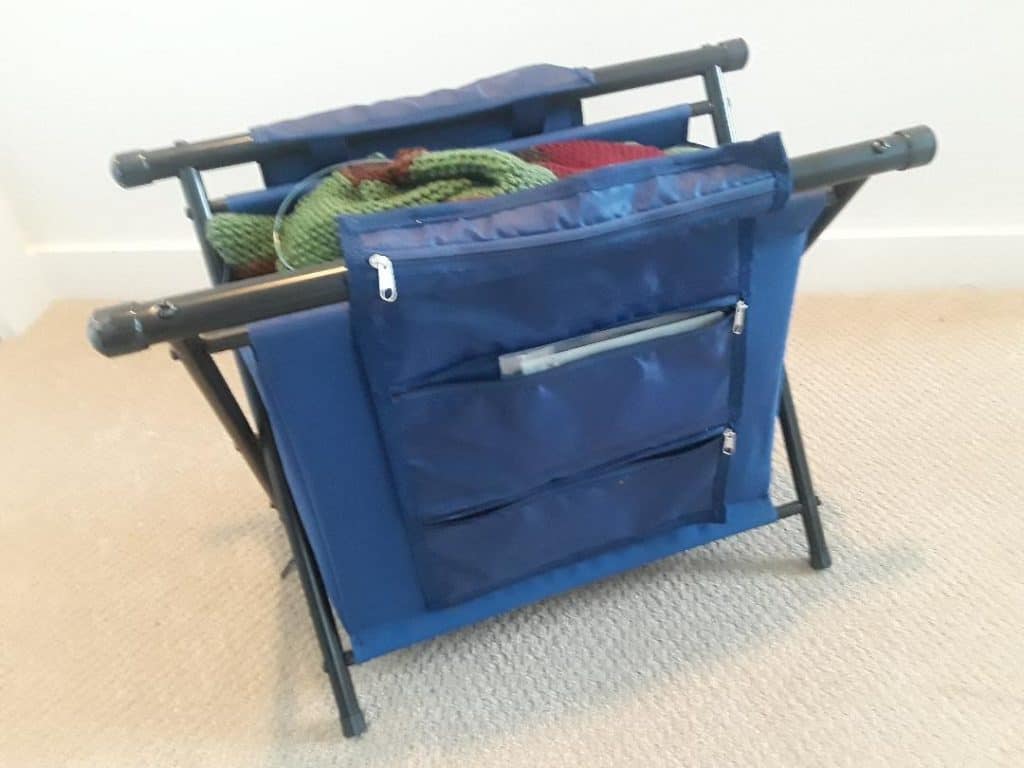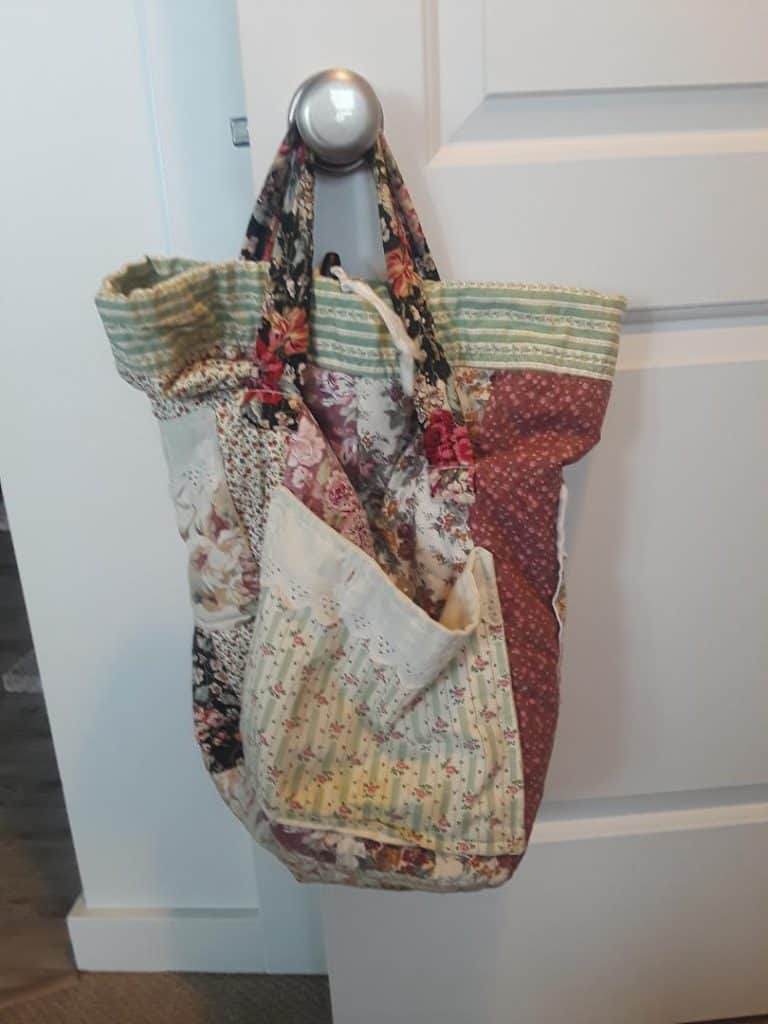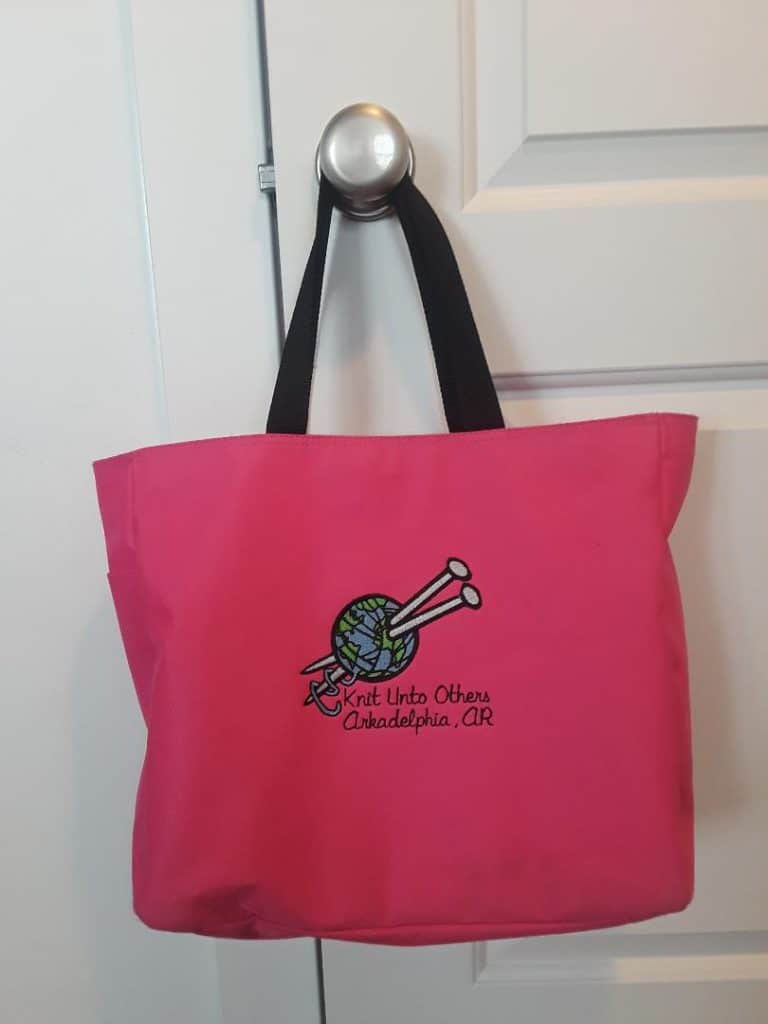I’ve been knitting for almost 40 years now and I think I’ve learned a thing or two about the art/craft of knitting. Lying in bed one night waiting for sleep to (eventually) come, I pondered my knitting history and thought of some of the things I wish I’d learned when I first started this amazing art of knitting. And what do you know? I came up with a LIST: 8 Knitting Tips for Newbies (from an Old Hand–me!).
1. Love the Yarn
Every knitter should decide right from the start to always and ONLY knit with a yarn that you love. Okay, the ball of puke-green acrylic yarn that you picked up at the dollar store (if they actually SOLD yarn) might be cheap, but if it splits every time you try to make a stitch, breaks every 4 yards, and feels like sandpaper going through your fingers, you’re probably not going to want to finish your project or wear it when you actually do.
Now I’m not saying that beginners should rush down to your local yarn store (LYS, remember?) and purchase the first beautiful rose-colored ball of silk/linen/bamboo yarn you find (for the low, low price of $40 for 125 yards). That would be foolish and extravagant and would likely get you into big trouble with your Significant Other.
Find a yarn that is soft to the touch, first of all. It should be a material that you’re comfortable with because you’re going to be knitting with it for a while, especially if you’re brand new to the craft. It should be tightly plied together so the threads don’t separate during the knitting process. It should be a color that you find pleasing to the eye. For example, I rarely knit with red yarn. I love red, but my eyes just can’t pick up the stitch differentiation anymore and get really tired with the struggle. I may use red as an accent color or in what I call ‘mindless knitting’–i.e., a pattern that I’ve worked hundreds of times and don’t even have to look at the work–but I just can’t knit a large project or challenging pattern with red.
Find yarns that meet these criteria and you’ve mastered an important part of the knitting process already without picking up a needle.
Speaking of needles…
2. Use Quality Needles
Bamboo is beautiful to look at and pleasing to the touch. But I don’t like knitting with bamboo because it slows down my knitting. Bamboo and many wooden needles are designed for clinging to yarn so that it can’t slip off the needle too easily–a desirable trait for those just learning to knit.
Don’t skimp on knitting needles! They are tools, and you deserve tools that are of quality materials. You’re gonna use these things for a long time if you find that you enjoy knitting. Buying junk needles that bend or break too easily is a sure-fire way to knitting insanity!
My favorite needles are Addi Turbo circulars. Addi needles come in various materials, but they’re called ‘Turbo’ for a reason: they’re really fast! However, feel free to experiment with different needle materials before you buy your knitting needles. Most LYS people are more than happy to let you experiment with their needles before you buy them. Take advantage of their largess and play around with a sturdy yarn and different needles to find a material or materials that you enjoy.
3. Light Colors vs. Dark Colors
One of the most frustrating things I’ve encountered in my years of knitting is starting a new project with dark blue or dark green or black yarn and realizing 40 rows into the project that I’ve gotten the pattern wrong! I’ve either misplaced stitches or skipped pattern stitches or forgotten the pattern… Get the picture?
So learn from MY mistakes and always start a new pattern with a light-colored yarn. It is so much easier to see your stitches, catch your mistakes, and see a developing pattern.
4. Use Lifelines
One of the coolest things I’ve learned recently is the use of ‘lifelines’ when you’re knitting a new pattern. Simply put, a lifeline is a strand of contrasting yarn that you thread through the stitches ON YOUR NEEDLE and tie off. You leave it in your knitting every few rows–say, every time you restart a pattern row or every 10-12 rows. These lifelines hold the stitches in a given row so that, in the event that you have to rip back your knitting (even the term sends chills down my back!), you don’t have to worry about losing rows or stitches. You simply rip back to the lifeline, thread your needle along the row held by the contrasting yarn, and take off again, working on your project without tears or temper tantrums!
Try them. They really work!
5. Accessories ‘R’ Us
Not many things frustrate me more than getting elbow-deep (metaphorically) into a knitting project and realize that I don’t have the necessary___ (fill in the blank). Maybe I’m supposed to have 5 stitch markers and I only have 3. Maybe I need point protectors and my kitten has chased one under the sofa. Maybe the project calls for cable needles and I have to ‘go looking’ for one.
Get the picture?
I wrote a blog recently about organization for a knitter or crafter. If you get organized, it will be much easier to find your accessories. If you can find your accessories easily, it is a piece of cake to collect the ones you need for every project you undertake.
Then you don’t have to put away your project, put on socks and shoes, grab a coat and your purse and your keys and run to your LYS to get a cable needle or anything else you may not have purchased yet or can’t find.
Save your time for KNITTING and not for running around looking for stuff!
6. Gauge vs. No Gauge
I’ve always gritted my teeth when it comes to gauge. In knitting, gauge is the measurement of stitches per inch and rows per inch that assures the correct fit of a knitted garment. Knitters work a gauge swatch using their selected yarn and the recommended needles to find out if they ‘knit to gauge,’ or if their knitting matches the gauge of the recommended needles and yarn.
If you are knitting a sized garment, DON’T SKIP THIS STEP! Trust me; BAD things will happen if you are trying to knit a sweater for a two-year-old and you knit loosely (like I do) but fail to knit a gauge swatch. Your finished sweater might fit your six-year-old instead of a two-year-old. If you knit tightly (like many knitters I know), your sweater for a two-year-old might fit a 6-month-old baby!
As I mentioned, I’m a ‘loose knitting’ kind of knitter. That means that if I use the recommended needle size, my knitting will be larger than it should be. I’ve found over the years that if I drop my needle size down one number–if the pattern calls for a size 8, for example, I use a size 7–then I’ll be right on gauge. Fortunately for me, this even applies if I’m knitting in the round (my preferred way of knitting a garment). Some knitters inadvertently tighten their knitting in the round.
So take the time to make a gauge swatch and measure your knitting. It will save you a MULTITUDE of tears and screaming later!
7. Tote That Barge…
If you discover that knitting is the next best thing to sliced bread…and is FAR BETTER for your hips!…then you’re going to need a tote bag or 20.
Yep. Twenty is probably a good target number of tote bags for the devoted knitter. If you’re only an occasional knitter (?! What would that be like?!), you could probably get by with 10 or so.
Just kidding! Okay, maybe not in my case. But you really need to have at least one good, sturdy tote bag to carry your yarn, needles, and supplies in. Whether you’re a stay-at-home knitter or a tote-bag-on-the-arm-and-let’s-go! kind of knitter, it’s important to have a way to keep all the knitting ‘stuff’ together in one place.
If you’re knitting socks, you certainly don’t need an industrial-sized large tote/container like my afghan tote:

But you might need one this large if you’re knitting an afghan for a loved one.
If you’re lucky enough to sew well or have a friend who really loves you who sews well, you might have a tote like this:

My dearest friend Joel’lene quilted this wonderful patchwork tote for me with pockets of varying sizes and a really deep interior and a cool drawstring top (to keep out the wild and crazy kitten that wants to play with my knitting!). She had no pattern, either; she just made it up using fabric she had lying around from other projects! She’s a terrific seamstress, as you can tell.
Maybe your LYS offers good, canvas totes like this one with its name stitched on the side:

A benefit of a good sturdy canvas tote is that you can also drop a water bottle and a snack inside, if the bag is big enough, like this one I bought at a lovely little yarn store in Arkadelphia, Arkansas on a visit to my mom. I also found a Free Trade tote there that I use for a lot of my small projects like the cowl I’m working on at the moment.
When you purchase yarn or supplies at a LYS, some yarn stores provide a fabric or paper tote with their logo or name stitched or stamped on it for your purchases:

Any small project will fit in these bags. However, if they’re made from paper like the one pictured above, be careful to keep them dry and intact or you may end up trailing yarn and accessories all across your lawn…or someone else’s!
8. Miscellaneous Ideas
- Avoid insanity by keeping your knitting AWAY from very small children or very curious cats!
- Don’t knit when under the influence of sleep-inducing or pain-reducing medications! (Weird things can happen. Trust me.)
- Keep sharp things like scissors or darning needles in a protective container in your tote. They can punch holes in pockets, liners, or exteriors.
- For every knitting tote you use, you should have a pair of small scissors. It’s just easier this way.
- NEVER play with a cat or dog with yarn. It will be impossible to teach them to leave your knitting alone! (Over the years I’ve taught several cats to leave my knitting alone, believe it or not. The kitten I have now is resisting this procedure.)
- Be sure to wash your hands thoroughly before you knit, especially if you have diaper-wearing toddlers. Nothing spoils a knitter’s mood faster than working on a nearly-completed project and finding you’ve soiled it with grease or dirt…or worse.
- You will make mistakes. Accept them as a part of learning and don’t dwell on them. The Amish, who are arguably the world’s greatest quilters, always plan a mistake in their quilts because of their belief that only God is perfect. None of us can claim Godhood, so cut yourself some slack and expect mistakes.
- Be brave when it comes to trying new patterns! Not only will you learn new techniques, but you’ll also have a wonderful time creating beautiful knitted projects and feel really good about yourself and your creative efforts.
Summary
My knitting adventure would have been simplified all those years ago if someone had shared these knitting tips and whatever else they had discovered. You will certainly make your own discoveries as you undertake various knitting projects. Feel free to use or adapt any of the knitting tips I’ve shared with you, and pass them along to other knitters you may know. After all, that’s what knitters do!
Happy knitting!
Anita